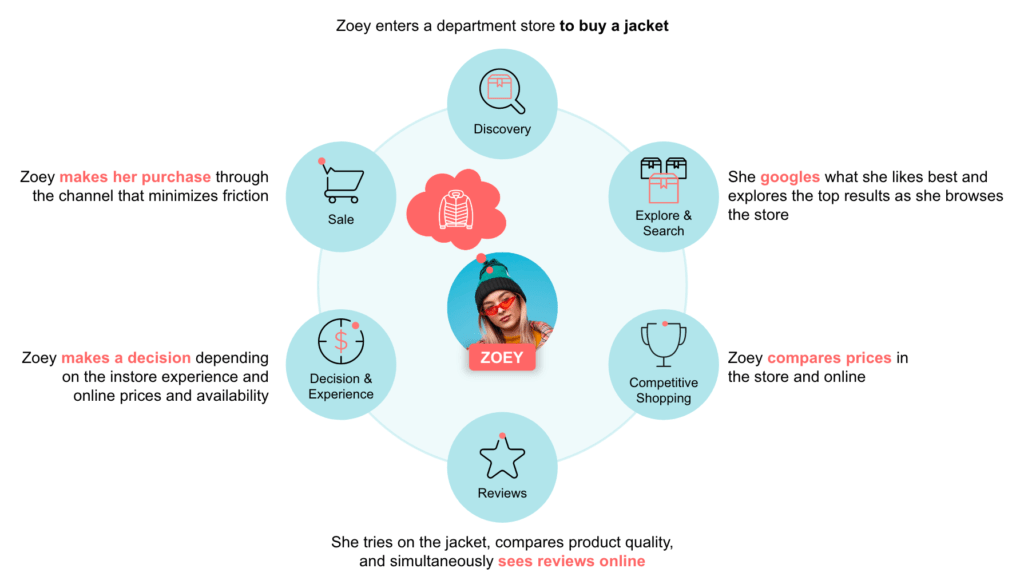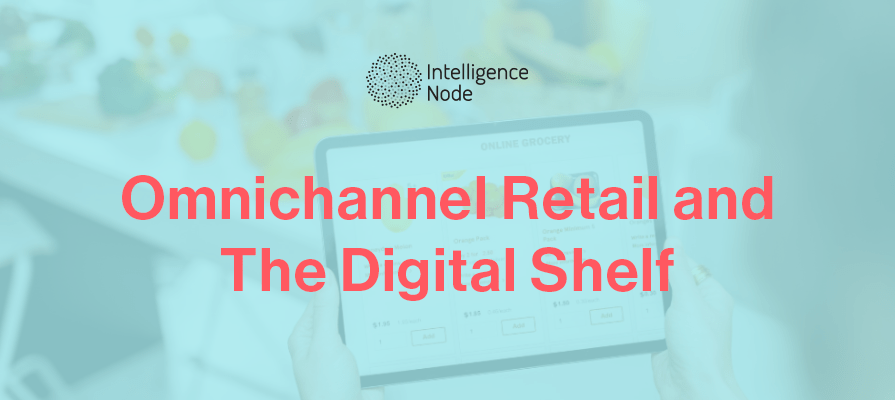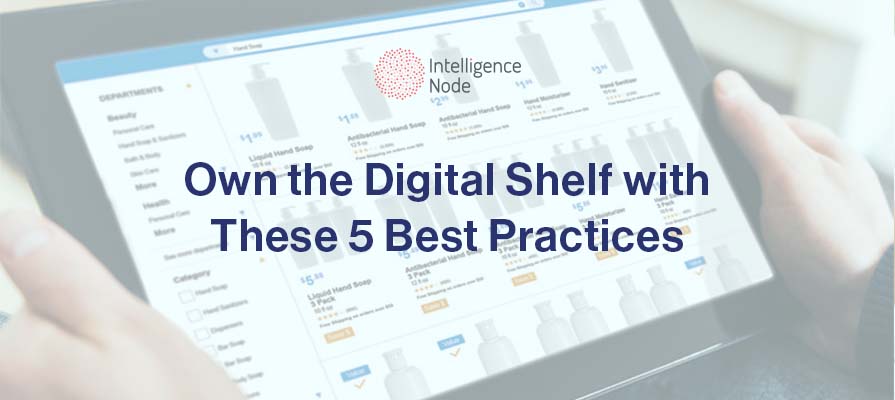How Your Business Can Rise To Meet Growing Consumer Expectations
The moment a consumer completes any retail transaction, more often than not, is preceded by a much longer process of decision-making, research, price considerations, and more that collectively constitute the path to purchase. This could be considered a sign of the times- consumers are overwhelmed with choice in the vast variety of products available, a much more comprehensive selection of price points and discounts, and flexibility in which medium they may choose to make their purchase.
Enter the ‘Digital Shelf’- the online counterpart of a physical retail shelf, and a term best used to analyze and understand the dynamic elements of the modern-day path to purchase. If your business is looking to master digital shelf optimization strategies now is the time to turn your attention to building an omnichannel presence. This report explores the mechanisms of the extended digital shelf and the extreme importance of omnichannel in increasing sales and even brand loyalty with your core consumer segment.
Both Physical and Digital Shelf Integral to Buyer Journey
With eCommerce’s rise and steady success this decade, shopping online has become such an integral part of the shoppers’ process that the existence of an online catalog is now a non-negotiable factor in their overall buying journey, as opposed to an option that replaces brick and mortar stores (and vice versa). Digital storefronts are used not just as a transactional platform but as tools of research and as a point of discovery of new products and promotional pricing. This newly evolving nonlinear process has created a naturally omnichannel ecosystem where the physical and digital shelves complement each other more than they compete- and now is the perfect time for brands to foster this relationship by developing relevant UI/UX features and establishing systems that encourage users to engage more deeply with both mediums as they make their purchase.
A Deep Dive into the Buyer’s Journey
Understanding the path to purchase is the first step in identifying key touchpoints that help make or break the decision to purchase. We’ve explored this process end to end, utilizing an example in which a consumer is on the market for a new pair of shoes.

Stage 1: Awareness
(Eliminating marketing efforts and advertorial content from consideration)
PHYSICAL SHELF: A consumer seeking to buy a pair of shoes will identify their selections from the relevant section of the store, often populated with multiple brands, and multiple varieties and styles. Classically, the ‘behind the shelves’ war dictates that the highest bidder often receives the best shelf space, at eye level, and lies at the easiest point of discoverability.
A store clerk or assistant further guides the consumer towards the best personalized selection, according to fit, style, preferences, and brand.
DIGITAL SHELF: A consumer seeking a pair of shoes, enters a search term into the relevant search engine (which could be direct to the customer brand websites, online marketplaces, or Google itself). Here, the shelf war is replaced with a PPC/SEA/SEO war, and the highest bidders are ranked higher up on the SERP, at the easiest point of online discoverability. But paid advertising forms a very small part of gaining digital shelf supremacy. Digital shelf ranking can be improved by optimizing product description pages with the right images, keywords, competitive pricing, stock availability, and positive customer reviews.
From this point, auto-recommendations may help guide the consumer to the best product within a brand’s selection, or the consumer may abandon one brand in favor of another. The more advanced your mechanisms to display similar or matching products, complementary styles, competitive prices, and relevant offerings to the consumer, much like a store clerk, the more engaged the consumer may remain.
Stage 2: Consideration
PHYSICAL SHELF: At this phase, the consumer has likely narrowed down their selections to a few options, possibly from one or multiple brands. They may choose to take some time to compare prices, inspect products more closely, or even get a second opinion from nearby shoppers or their companions. They may try on the product and send photos to friends. Most noteworthy – the consumer in the consideration stage is likely also analyzing options online, double screening as they shop in-store, and will best appreciate flexibility in the option to order online for better prices, or circle back to a physical retailer after making their final decision.
DIGITAL SHELF: With a shortlist of products on hand, the consumer at the consideration phase of shopping online will make absolute use of the website features available to them. Zoom, 360-degree imagery, AR try-on capabilities, discounts, and good customer reviews are indispensable at this stage, and a consumer unable to zoom into the product will just as quickly click away. In the absence of touch, top online retailers opt to include detailed product descriptions outlining the fabrics and materials used.
To retain a customer at this phase, detailed reviews of the fit and styling options, as well as linking them to alternative available colorways, and similar designs on your platform, can expose them to a wider product assortment, and complement the physical shopping experience as the consumer researches their options. Coupled with the ability to quickly share product information with friends, cross reference their options, and ‘wishlist’ their top picks- you’re one click away from checkout.
Stocking and inventory management are critical at this phase- while a well-rounded digital and physical presence can keep a customer engaged, products going out of stock are an absolute missed opportunity, where a consumer is far more likely to click away or turn their attention to competing brands than to wait for a restock. No matter the medium, marketplace, or time of year, a consumer unable to locate your product in a quick shopping trip or online search, is a consumer lost. Intelligence Node’s product assortment data and tracking capabilities help brands stay on top of product availability and ensure key selections never go out of stock on any platform, any shelf, anywhere.
Stage 3: Decision
PHYSICAL SHELF: When it’s time to make a purchase, nothing takes precedence over pricing. In a brick-and-mortar store, the consumer may be deterred by unclear promotional pricing options, or the total lack thereof- coupons, vouchers, loyalty cards, and seasonal offers help sweeten the deal. Rather than rely on sales representatives and staff for assistance, the modern-day shopper may do one final price check online before completing their transaction: and catching major price discrepancies or seemingly better options can completely break off the decision to buy.
Tracking competitor pricing in real-time with Intelligence Node can help your business stay vigilant of ever-changing pricing trends and promotions, stay ahead of the curve, and always have the best deal for the best margins.
DIGITAL SHELF: At the decision stage, brands with an omnichannel presence have a competitive advantage. With thousands of options at their fingertips, ensuring your brand has deals and discounts that stand out against similar products by similar brands keeps the consumer focused on your business, even in a sea of alternatives. Product matching capabilities help track these competing offerings to provide the most accurate picture of what your business is up against, and how to position your lineups to your ideal customer. Intelligence Node’s ‘unmatched’ product matching services help you track this data in real time, with actionable insights and 99% accuracy, every time.
What's Next? Implement a custom digital shelf strategy with Intelligence Node
Hitting the Retail Bull’s Eye
The modern-day shopping experience is oversaturated – and the modern-day consumer has evolved tech savvy, market savvy, and foolproof to navigate it. With new brands constantly entering the ecosystem, and competitors constantly making efforts to stand out against them, shoppers drown out the noise and navigate this environment by hopping platforms and mediums as they see fit. They know where to find the best prices, the quickest deals, and the most reliable product offerings- they can find out in just a few clicks.
DTC brands and major retailers need to be equipped with the right data to rise to fast-growing consumer expectations – and to win their time, retailers need to know the market, most importantly, their competition, as well as their consumers.
Intelligence Node is committed to exactly that- retail intelligence that keeps your brand on top of competing products, brands, and pricing strategies with state-of-the-art product matching and price monitoring software.
Explore some of the metrics Intelligence Node tracks to help businesses rank on the digital shelf.
This year, we’ve doubled down on our ability to fetch accurate holistic data thanks to our partnership with BARE international, a leader in physical data – bringing together two data superpowers with one goal: to help your omnichannel business utilize our market intelligence to rack up sales, and multiply profits.
Continue to read about : How Can Next Generation Digital Shelf Technology Help You Grow?




